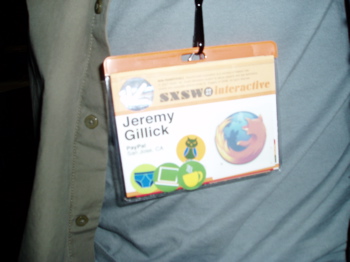Heads up! This was written in 2007 and many things have changed since then. Nowadays, CSS transitions are widely supported by browsers and a better approach.
Ever since the dawn of CSS and compliant browsers web developers have been squeezing the presentation layer out of HTML and into external CSS files. It has become a web development battle cry and having a tableless website was worn as your badge of honor. To the web dev elite, having <br> tags in your HTML is a sin punishable by death (or at least severe laughing and poking).
Now we are moving in to the so-called ‘Web 2.0’ era. The time of shiny websites with page refreshes cut down to a select few actions. Animations and special effects compliment the content as it fades in and out of view. Libraries like YUI, Dojo and Prototype are making these things increasingly easy and well supported. But with all this, I feel we’re forgetting something. Where’d the presentation layer go?
When you’re animating a rollover or fading some colors do you stop and thing what you’re doing? You’re putting the colors, dimensions and effects into your JavaScript! The presentation layer that you’ve worked so hard to externalize is leaking into your JavaScript code. This is a slippery slope that we have to prevent now. The presentation layer should remain in the CSS, markup in the HTML and logic in the JavaScript. If you want to change the colors or sizes the elements are morphed into, you should be making those changes in CSS.
This brings me to my solution. I present to you an extension to the YUI animation library that will perform your cool animations from the styles defined in your CSS. I call it ClassAnim.
How it works
- ClassAnim starts by reading the styles from the base element.
- Then it quickly applies the new CSS class to it, reads the new styles and removes the class. This happens quicker than the user can notice.
- Now it compares the styles from both versions, extracts the differences that can be animated, and invokes the animation.
With ClassAnim, when you want to make a color or dimensional change you don’t have to go searching through your JavaScript, you make the change straight in the CSS — the way it was meant to be.
See the demo
(Please note: This API is still beta)
Link Rollovers (HoverHijax)
Here’s a simple implementation for rollovers. You’ll notice that all the links on my site have a fading hover effect on them (try mousing over one). This uses a simplified version of ClassAnim that I call HoverHijax. It only animates colors and does it on mouseover and mouseout. My original prototype would actually honor the :hover pseudo class, but good ‘ol Internet Explorer wasn’t allowing me to get to those styles through JavaScript. The current implementation adds a ‘hover’ class to all links when they are being moused over.
See the demo
(Please note: This API is still beta)
The best thing with HoverHijax is that it follows the Progressive Enhancement (or Hijax) strategy and can easily work with or without JavaScript as long as you use the ‘hover’ class along with a ‘:hover’ pseudo class. The only difference is that without JavaScript it wont have the cool fade effect.
a:hover, a.hover {
color: #000;
}
Where to Download
You can download these new ‘experimental’ APIs from my subversion repository.






